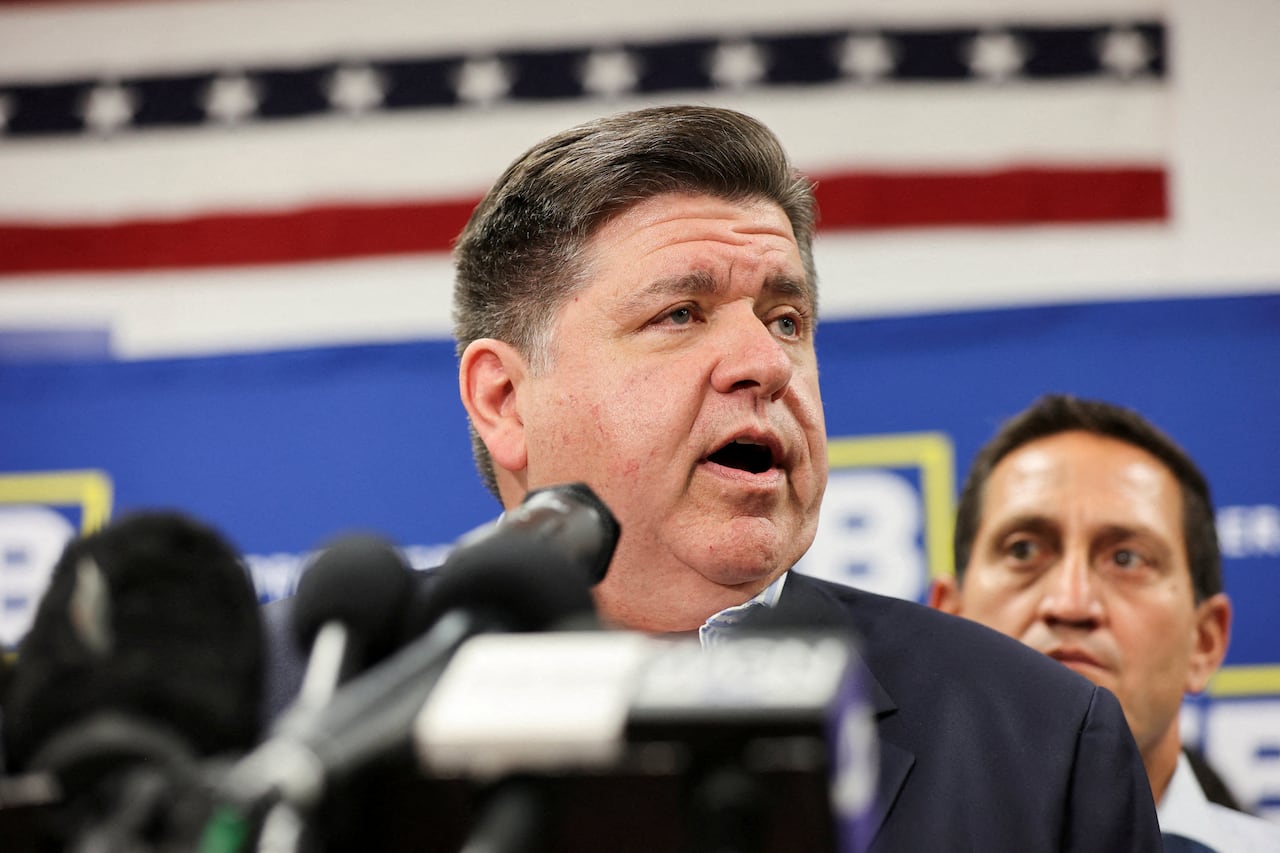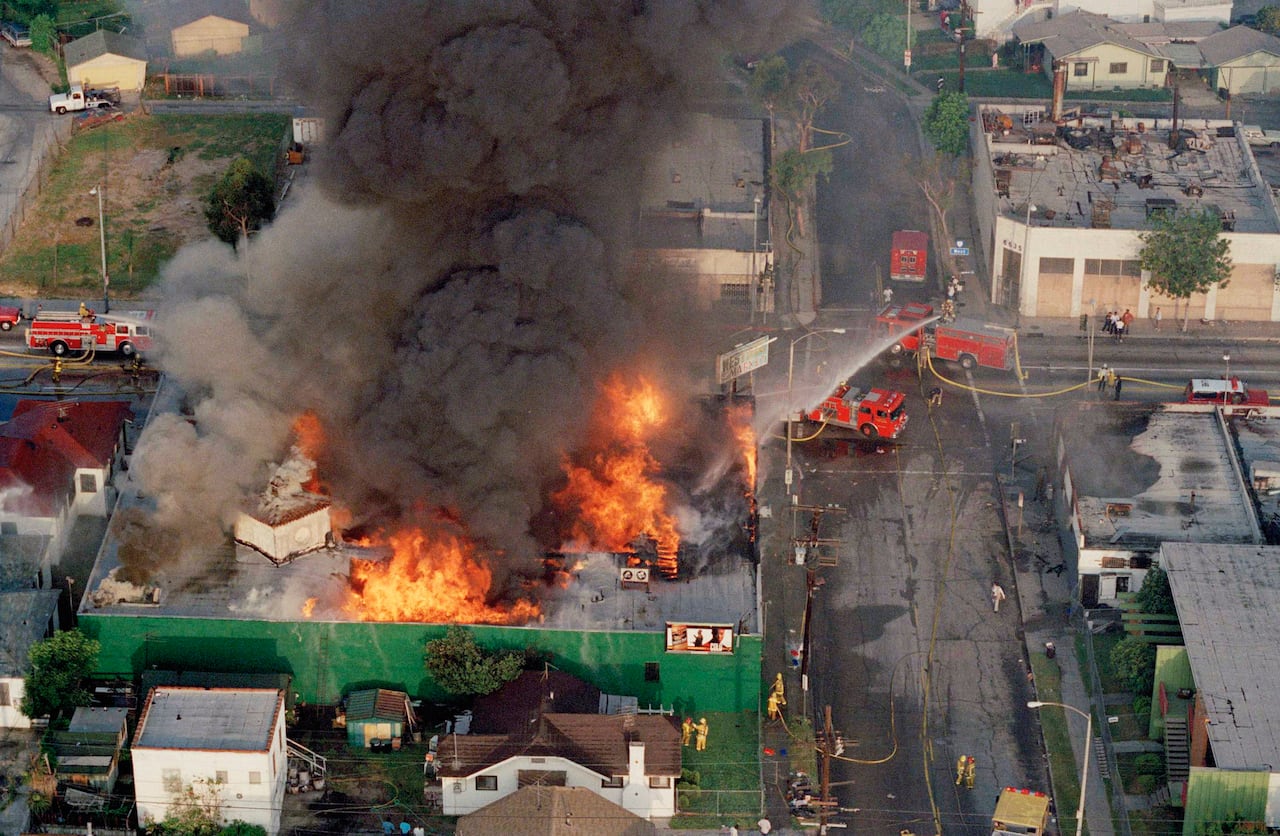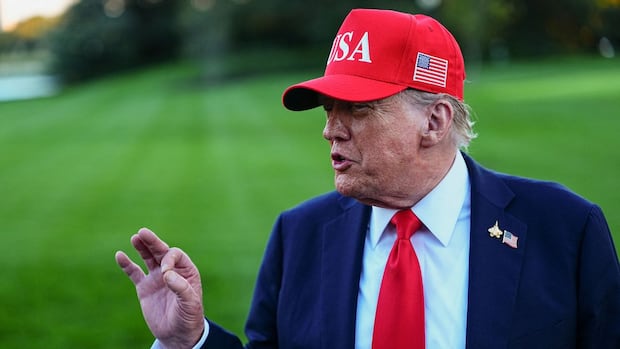US President Donald Trump threatened to activate the Insurrection Act, which no US president has used in more than three decades.
Trump has expressed his eagerness to send the army to several American cities, led mostly by elected officials from the Democratic Party, to suppress what he and others in his administration have described as out-of-control crime.
So far, legal battles are taking place between the Trump administration and officials in Illinois, California and Oregon, who have neither requested nor welcomed federal intervention. But the president could try a more authoritative approach to doing so.
“If I had to activate it, I would,” he said Monday. “If people were being killed and the courts were detaining us or governors or mayors were detaining us, then of course I would do that. I mean, I want to make sure people aren’t killed. We have to make sure our cities are safe.”
Here’s a look at the history and controversies surrounding the declaration of rebellion.
What is the law of insurrection?
The Insurrection Act gives the US president the authority to deploy the military or federal National Guard troops at home to stop uprisings and rebellions.
While the law is commonly referred to as the Insurrection Act of 1807 because that was the year it was signed into law by then-President Thomas Jefferson, experts like Stephen Vladeck, a law professor at Georgetown University, have pointed out in recent weeks that the military’s role in domestic law enforcement It is not defined in just one act But in a series of laws issued from the late eighteenth century until 1871.
A US federal judge has temporarily blocked the Trump administration from deploying any National Guard units in Oregon, including the California National Guard. The state of Illinois and the city of Chicago also filed a lawsuit against the Trump administration over its efforts to deploy National Guard troops in that state.
The Insurrection Act would have repealed the Posse Comitatus Act, which was passed in 1878. This law generally prevents federal branches of the military from engaging in law enforcement, responsibilities that fall to local authorities.
Under the Insurrection Act, troops can conduct searches or arrests.
When Trump sent the National Guard to Los Angeles and other cities last summer, he relied on a different legal basis, Section 12406 of Title X of the United States Code.
This section prohibits the National Guard from conducting civilian law enforcement activities. This means they can help protect federal officers and property but are not allowed to make arrests. Democrats and administration critics mocked images of military personnel picking up trash and performing other mundane tasks.
Why is it controversial?
There is a long American tradition of keeping the federal military out of civilian affairs.
Constitutional scholars have said that the nation’s founders, who witnessed abuses committed by the British military during the colonial era, feared that giving the president unlimited control over the troops would erode civil liberties.
There is also the issue of the laws themselves, some of which have been described as overly broad or vague.
“There is no definition in the text of the Insurrection Act of mutiny, insurrection, domestic violence, or any of the other key terms used in defining the basic conditions for deployment,” Joseph Nunn, a historian of military law, said. In 2022, he wrote for the liberal nonprofit Brennan Center for Justice.
Section 253 of the Insurrection Act is particularly problematic, Laura Dickinson, a law professor at George Washington University, wrote last year.
This section may be construed to “include even relatively minor impediments to the ‘enforcement of the laws’ of the United States or impediments to the ‘course of justice’ under those laws, such as a small protest that interferes with law enforcement activities or judicial proceedings, so long as there is a conspiracy to do so by two or more persons.” Dickinson wrote for the nonprofit Lawfare.
How do countries react?
Historically, in cases where the Insurrection Act was invoked, presidents and governors usually agreed on the need for troops.
In 2005, then-President George W. Bush decided not to invoke the Insurrection Act to send active duty troops to Louisiana in the wake of Hurricane Katrina, in part because the state’s governor opposed the move.
Local officials are expressing their dismay about 2025 as well.
“In America, we don’t put the military on our streets except in extreme circumstances, like an invasion or an insurrection, and those things don’t exist right now in Oregon,” Dan Rayfield, the state’s attorney general, told NBC News on Sunday, speaking about conditions in Portland.

Illinois Gov. J.B. Pritzker said this week that his view is that the Trump administration’s goal is to “make it appear that peaceful protesters are a mob by firing gas pellets and tear gas grenades at them…to create a pretext for invoking the Insurrection Act.”
While violent crime rates in American cities are much higher than cities in other Western countries, overall in the United States, per capita homicide rates have declined in recent years from the highs seen between the 1970s and 1990s — notwithstanding outbreaks in some cities between 2020 and 2023.
For example, Chicago officials recently said the number of homicides in the city this past summer was lower than in any year since 1965. Chicago recorded 525 homicides last year, according to city Police Department reports, far fewer than in the early 1990s, when the number was often higher than 900 a year.
When has the verb been used before?
The Insurrection Act has been invoked about thirty times since its inception, but the last president to do so was George H.W. Bush in 1992, at the request of Pete Wilson, Governor of California.
This request came after riots and several acts of arson were committed in Los Angeles after the acquittal of four police officers in connection with the beating of a civilian, Rodney King, that had been captured on amateur video the previous year.

The days-long protests resulted in an estimated US$1 billion in damages and more than 60 deaths, many of which remain unsolved crimes to this day. Another 2,000 people were injured and 6,000 were arrested.
When Lyndon Johnson was president, he used this law in a similar manner in 1967, after riots broke out in African-American neighborhoods in Detroit over police tactics.
Johnson was one of three presidents, along with Dwight Eisenhower and John Kennedy, who invoked the law in specific cases to protect the rights and safety of civil rights demonstrators or black students attending schools in the southern United States.
Perhaps the most famous use of this law historically was when Abraham Lincoln used it in 1861 when several southern states seceded.
Will Trump be legally banned?
Joseph Nunn, writing for the Brennan Center, said the 1827 case set the parameters by which the president has exclusive authority to decide when the military can be deployed.
But, he wrote, in later cases, “the Supreme Court has suggested that courts may intervene if the president acts in bad faith, exceeds ‘the permissible scope of honest judgment,’ or acts in a manner not clearly authorized by law.”
However, the current US Supreme Court has given Trump wide latitude in unsigned orders this year in which he has exercised authority, including large-scale deportations and dismissals of federal government officials. The court consists of 6 to 3 conservative justices, three of whom were appointed by Trump in his first term.
https://i.cbc.ca/ais/20eb9c27-ec6d-4f95-8b37-41668cff14b3,1759946273495/full/max/0/default.jpg?im=Crop%2Crect%3D%280%2C567%2C5500%2C3093%29%3BResize%3D620
Source link
